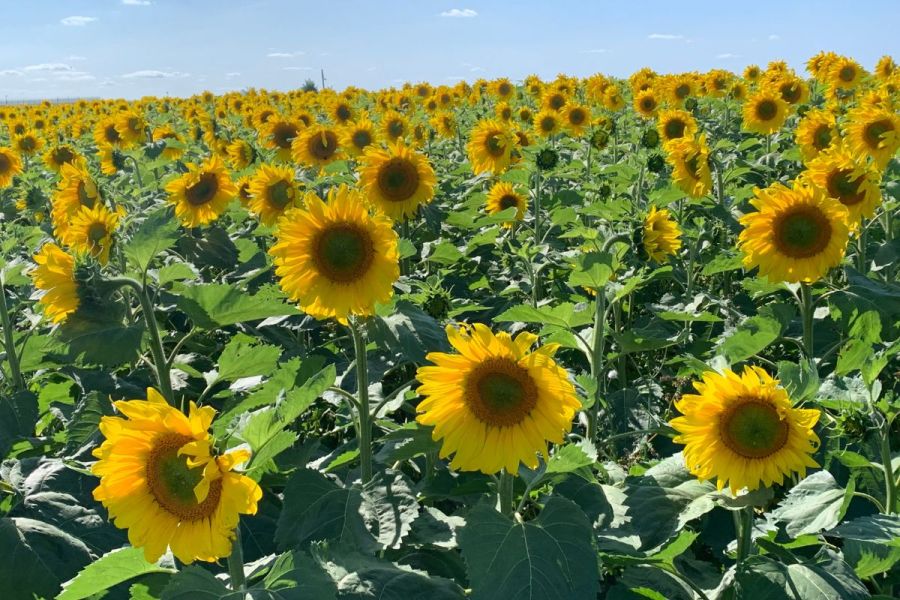From an Instagrammers’ paradise to commercial bird seed production, sunflowers have the potential to offer something for all. CPM speaks to growers who are making it happen for very different purposes.
“Sunflowers are jolly, bright and make people smile, they’re always the first thing that people notice.”
By Janine Adamson
Helianthus annuus – the common sunflower. For many, the very embodiment of summer, bringing much joy to gardens, parks and wildflower meadows across the country.
And then there’s sunflowers for their rich golden oil where Russia and Ukraine are the primary producers, growing the crop on a considerable scale. However, a combination of recent political unrest and climate change means UK interest is ramping up in the commercial opportunities that sunflowers present.
“We experienced a surge in enquiries from UK farmers about sunflowers for oil last year, mainly off the back of the Ukraine invasion,” says RAGT’s David Ramdhian. “Early maturity is important for the UK and excitingly, we’re planting the first commercial crop of RGT Capitoll sunflowers this spring, an oleic variety with very early maturity. We’re also testing other lines to find varieties suitable for the variable conditions we have here in the UK.”
Encouragingly, it seems initial steps are being made towards making British sunflower oil a reality, but that’s certainly not the end of the story. Whereas the black seed is traditionally processed for oil, non-oilseed sunflowers, such as those grown in home gardens, produce black and white striped seed. And although most farmers’ experience might extend to using such in game cover mixes and environmental stewardship, it needn’t stop there, says Vine House Farm’s Nicholas Watts.
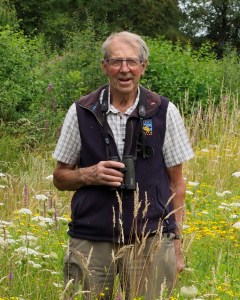
Nicholas Watts grows more than 40ha of straight, black-seeded sunflowers each year to sell through an e-commerce website.
“There’s so much potential in growing commercial sunflowers for retail bird seed. As the UK imports a lot of seed from France and Bulgaria, it seems a logical first target for upscaling home production.”
His comments aren’t without supporting evidence, given the farm grows more than 40ha of straight, black-seeded sunflowers each year to sell direct to ‘discerning customers’ through an e-commerce website. The business began around 25 years ago following an inspirational bird watching holiday to Argentina – the world’s fourth largest sunflower producer.
“It’s a marvellous flower and worthwhile for us, you simply can’t beat sunflower seed for attracting birds. That said, for years it hasn’t paid for farmers to grow and sell through distribution. We make it work because we grow, pack, and sell it ourselves, which adds value from a customer perspective,” says Nicholas.
Located in Spalding in Lincolnshire, Vine House Farm is one of only a few UK sunflower growers and is currently the largest. They grow black-seeded varieties due to the bird-friendly benefits; as well as offering higher fat content than striped seed, they also have a thinner husk, which is easier for garden species, such as finches, to remove.
Geographically, Lincolnshire is viewed as the furthest north that sunflowers can be grown at a commercial scale. Nicholas admits this isn’t the only nuance of the crop. “We drill in April and May, and harvest in October. Sunflower harvest clashes with cereal planting in the autumn, which is no doubt off-putting for other farmers in terms of time management.
“It’s late because unlike the fresh flower market, we have to wait for the flower heads to die off and turn brown so the seed has low moisture content. We apply Roundup (glyphosate) at the end of September then bring the crop in using a combine harvester,” he says.
Despite many successful years, it hasn’t always been easy. In 2012, the crop failed entirely due to the wet summer and in 2021, there were only three days suitable for harvest due to high seed moisture levels. Other pressures include lack of varietal choice and registered plant protection products as well as the threat of pigeon damage.
“Pigeons make the crop rather involving. It’s imperative that you keep the birds off during establishment otherwise you don’t have a crop at all. Sunflowers can’t come back from that initial damage,” says Nicholas.
Although few varieties are available for commercial purposes, there are more than 80 sunflower species across five categories – tall, dwarf, florist, branching and perennial. Colours range from pale yellow through to tawny red and the flower heads can span up to 30cm wide.

Depending on what you want to do with them, you have to treat sunflowers as individual crops, says Ashley Cooley.
Due to the plant’s diverse uses, from bird seed to ornamental flowers, it makes for a keen challenge agronomically-speaking, says ProCam’s Ashley Cooley.
“Depending on what you want to do with them, you really have to treat sunflowers as individual crops,” he says. “Growing cut flowers versus growing for seed are very different disciplines.”
“Either way, soils should be light and free-draining to avoid root rot and although they’re a much-welcomed cereal break crop, rotations should be at least four years wide due to the risk of sclerotinia. Luckily, they’re competitive against weeds once successfully established, but you do have Stomp Aqua (pendimethalin) and Emerger (aclonifen) if required.”
Unlike cereal crops, high soil nitrogen reduces the yield of sunflowers as it encourages vegetative growth, making the crop attractive for low-N scenarios. Instead, ensuring adequate potassium helps to boost flowering and seed production.
When successful, seed yields range from 1-2.5t/ha, which Ashley believes is realistic as long as the basics have been well thought through. “As with any niche crop, the advice to growers is to consider the fundamentals first, such as soil type, geographical location and when can you feasibly plant.
“As agronomists, we’re building up our knowledge of sunflower management but still have much learning to do. This is mainly because there are no registered fungicides to keep disease under control. Deploying everything from the cultural control toolbox will be the only way to make the most of the opportunity ahead,” he says.
Every day’s a school day – a phrase that pick-your-own specialist Jason Butler has also become accustomed to. Jason, who farms with his parents near Hornsea in Yorkshire, has spent 10 years building up his business, The Pumpkin Patch.
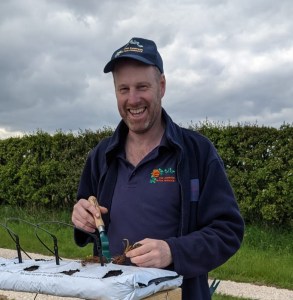
Sunflowers have proven a hit for Jason Butler, who operates a pick-your-own business on his family farm.
In a bid to diversify and extend the public-facing season, he planted sunflowers to try and capitalise on ‘the ‘gram’, aka, photo sharing smartphone application, Instagram. “We like to explore niche things on the farm to encourage public engagement and keep people coming back for more,” says Jason.
“Last year we planted just over a hectare of sunflowers, drilling direct into the field. I think it was more luck than management that we were successful because field conditions really lacked soil moisture. In a way, this, plus some variability on drilling depth, meant we had successional flowering through to autumn which worked well in the run up to Halloween.”
Although north of Lincolnshire, Jason’s proven it’s possible to grow sunflowers, albeit on a smaller scale and for a non-yield-driven purpose. He promotes the business through social media offering both free photo opportunities with props and the opportunity to pick your own stems for a set price, helping to attract the crowds.
“Just like the pumpkins, Instagrammers love having their photographs taken among the sea of yellow, so we’re going to give it another go this year. The main issue we’ve had is drilling at the right time, you need enough soil moisture for germination. Then it’ll be fine-tuning our pre-emergence weed control.
“We struck lucky last year, in that the plants grew up and away really quickly, but I acknowledge we ought to have more involvement this time,” he says.
Jason also plans to include a small plot of pick-your-own peas to run alongside the farm’s table-top strawberries. He wants to offer hands-on activities for families that showcase how food is produced.
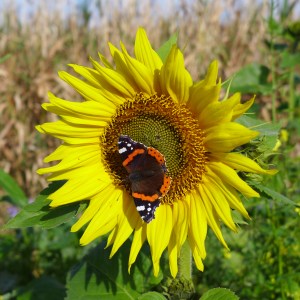
Sunflower heads attract insects and pollinators while offering a structural perch for farmland birds.
Whereas Jason is relatively new to growing sunflowers, there’s still value to be had in more conventional approaches, according to Richard Barnes of Kings Crops.
“It’s great to hear of new and creative ways to market sunflowers as they’re a valuable break crop. However, established practices such as growing for game cover and winter bird food can also pay well if approached correctly.
“In terms of Mid-Tier Countryside Stewardship, there’s been a recent uplift in payment, with growers receiving £732/ha for planting for winter bird food (AB9). This involves planting a six-species or more seed mix in the spring to provide food for farmland birds during the winter; sunflowers are on the approved seed list for this.”
Richard explains that this works hand-in-hand with supplementary winter feeding for farmland birds (AB12), which pays £669 per tonne, for every 2ha of AB9. Seed should be spread in areas which are firm and free-draining and in close proximity to overwintered stubbles or wild bird seed mixtures.
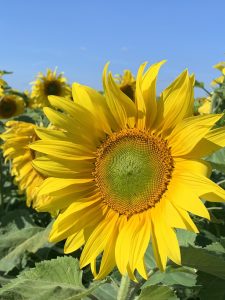
Established practices such as growing sunflowers for game cover and winter bird food can pay well.
He also says that sunflowers make effective game cover and are a useful companion for widely used crop, maize. “Because sunflower and maize seeds are similar in size they can be drilled together, offering good cover throughout game release periods. An added benefit is sunflowers help to make a maize crop more attractive to wild birds.”
Richard believes the basic environmental benefits of the plant shouldn’t be ignored either. “Not only do sunflower roots break up soil compaction, cycle nutrients and reduce soil erosion, but the flower heads attract insects and pollinators too,” he says. “From a physical perspective, their structure provides a solid perch for birds while they feed on other species in the mix.”
According to Richard, growing sunflowers for seed is also a way of Kings Crops supporting the local market, centred around their warehouse in Diss. This involves establishing contracts with professional growers to supply sunflower seed for supplementary feeding purposes.
“We’re passionate about this because it’s providing a market for local crops from local growers. The key here is ensuring quality because trash can bung up hoppers and feeders. But the numbers make sense, there’s huge potential,” he concludes.
This article was taken from the latest issue of CPM. Read the article in full here.
For more articles like this, subscribe here.
Sign up for Crop Production Magazine’s FREE e-newsletter here.

